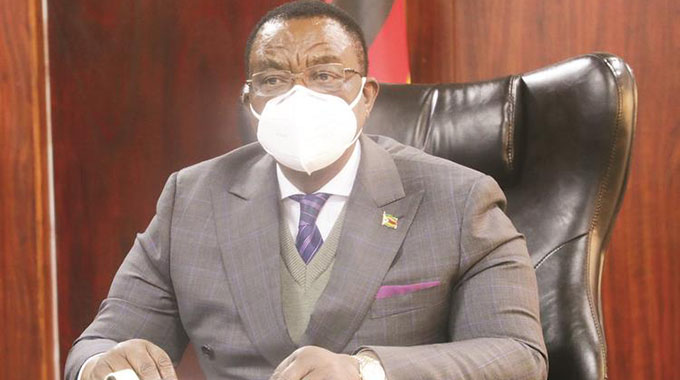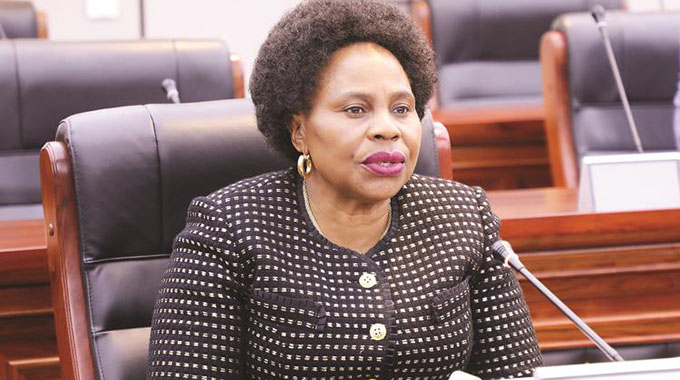EDITORIAL COMMENT: Kwekwe Covid-19 response appropriate

The intensification of the lockdown in Kwekwe and surrounding areas after it was confirmed that a city resident died of the new B.1.617 variant of Covid-19, the variant that has helped fuel India’s third wave of infections, was not a panicky move, but a carefully targeted response to make sure there is no unstoppable chain of infection.
The modified lockdown announced by Health and Child Care Minister, Vice President Constantino Chiwenga was nuanced.
He is leaving the city economy functioning and the schools open, with the full set of precautions being enforced, including the ban on visitors to boarding schools. But social and religious gatherings are now banned in the district and the curfew has been extended to 11 hours, 7pm to 6am. And this intensification is set for a fortnight.
Generally speaking, this will have the same effect as a full level-four lockdown. Businesses have been more compliant than many individuals, insisting on the sanitiser as you go in, insisting that customers are masked, preventing overcrowding and many doing the temperature checks.
With a higher level of alert, it can be safely assumed that they will tighten up if they have become a trifle slack, and that is all that is needed.
Social gatherings are another matter, unfortunately, and the complacency that comes with a few beers or just when people are enjoying themselves cannot be risked.
At that, the new curfew hours in the district will need to be enforced, and that enforcement will automatically reduce any illegal private socialising, since most of that is done in the evenings.
Meanwhile, health staff will be tracking down all the contacts of the unfortunate resident and will be telling all city residents to take the rest of the precautions seriously, the usual batch of sanitiser, facemasks and social distancing that are supposed to be in force everywhere, but which people have become complacent about.
The objective in this, and in the general provisions in force around Zimbabwe, is to make sure any chain of infection does not expand and instead dies out.
What health staff aim for is that each infected person will, on average, infect less than one other person. So long as that transmission rate is below one, a chain of infection will die out. If it goes above one then there are a growing number of infected people.
So long as the people of Kwekwe, Redcliff and surrounding farmland take the new measures seriously they will avoid any outbreak of B.1.617. It should be noted that the new variant is not directly responsible for the high number of Indian deaths.
That is a direct result of the high number of new infections, and that in turn is largely a result of what were high levels of complacency.
India has done magnificently in its vaccination programme, with the many tens of millions vaccinated, but even with 191 million people having had their first dose and 41,6 million their second dose that comes to just 3 percent of the population fully vaccinated.
This is the danger of looking at numbers, rather than at percentages. India’s population is huge and so the vaccination programme has to be huge.
And that is the potential danger in Zimbabwe. By Saturday we were up to 630 348 people having had their first jab and another 273 725 their second. But we have just over 1,8 percent of our population fully vaccinated, although more than 4,2 percent with their first jab, and we reckon we need a minimum of 60 percent before we start reaching herd immunity.
We have done well having already used over 900 000 doses of vaccine and likely to reach 1 million doses sometime this week. But we still have a long way to go before we can relax.
The target of 10 million people needs 20 million doses, so we need to keep our achievement in perspective.
Our achievements give greater protection than the actual percentage suggests, since many of 273 725 are frontline staff, those most likely to be interacting with large numbers of the public, but we are still far from vaccinating enough to establish firebreaks, let alone moving towards herd immunity outside some of our border towns, and especially the City of Victoria Falls.
Vice President Chiwenga did mention earlier on Friday that Zimbabwe’s supply chain for vaccines was working, that there were adequate supplies of vaccine in the country and in the pipeline to keep the national programme going.
As we have said before, if we are serious, suppliers will keep us supplied. But we need to maintain that level of seriousness.
We are already seeing demand rising, which now requires some adjustments to quantities regularly sent to some vaccination centres, but that is just logistics.
Fortunately Zimbabwe chose to use the inert vaccines, almost all from China, so our existing cold storage, cold chains and even those carrying cases taken to some centres are all the ones we were using for the routine and large vaccination programmes already in force that have done so much to slash our infant mortality rates and ensure a healthy population.
That has meant we were able to roll out of national programme faster, the best in Africa after Morocco once we exclude the small island nations where numbers are so much smaller and logistics are so much easier.
The other huge advantage is the lack of side effects. We might be about to hit 1 million doses, but so far no one has reported a side-effect, or at least one traceable to the vaccines. That was expected, although the nurses giving the jabs are still careful to ask questions and still tell everyone to return immediately if there is a side effect.
We now just need to keep on doing what we have been doing, and that means obeying the lockdown rules, which are still in force, and maintain our vaccination progress.
The localised intensification of the lockdown in Kwekwe district also shows that the authorities can move fast if there is some localised blip.
There may well be others as we go forward, but both our authorities and the general population are getting used to the pandemic, the authorities tailoring reactions to suit the circumstances and the population hopefully understanding the need to stay alert for some time to come.








Comments